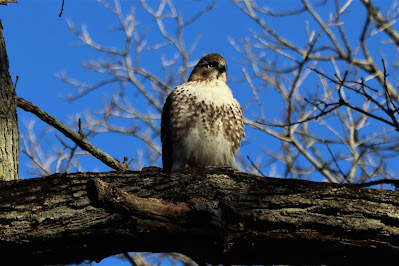A Very Busy Bush!
Since the ground is covered in snow this morning, I wanted to post some proof that spring is on the way. These pictures were taken on April 11th in our yard.
Hundreds of pollinators were on our Boxwood Bush. It was in bloom and the green flowers were easy to miss, however the fragrance of the flowers attracted many insects. The above insect may look like a bee, but is one of the "Flower Flies". They can mimic bees, thus avoiding unwanted attention from predators and people.
Narrow-headed Marsh Fly
A member of the Blow Flies family.
Confusing Furrow Bee (I think)
Western Honey Bee: Notice the yellow pollen basket on the leg.
Hovering Western Honey Bee (pollen basket on each leg)
I saw a minimum of 6 species on the bush in 30 minutes! One out of every 3 bites of food we eat exists because of the efforts of pollinators, including many fruits, vegetables and seeds! At least 75% of flowering plants on the earth are pollinated by insects and animals. This is equivalent to more than 1,200 crops and 180,000 different types of plants. These plants in turn help to stabilize soil, clean the air, supply oxygen and support wildlife! (https://www.nps.gov/subjects/pollinators/what-is-a-pollinator.htm)























































